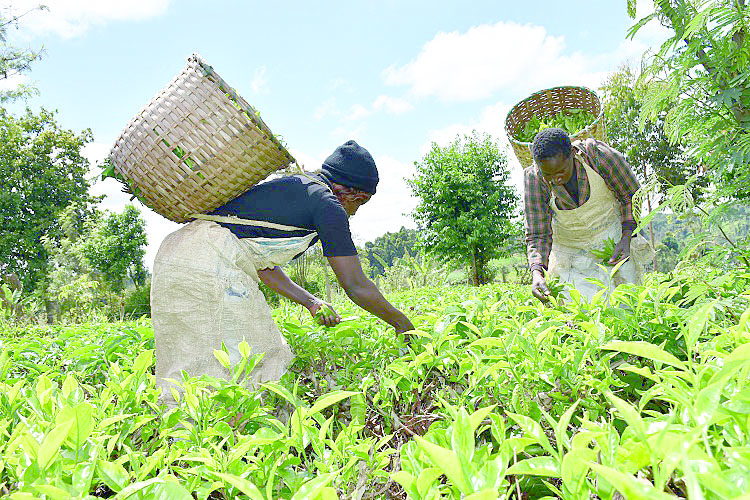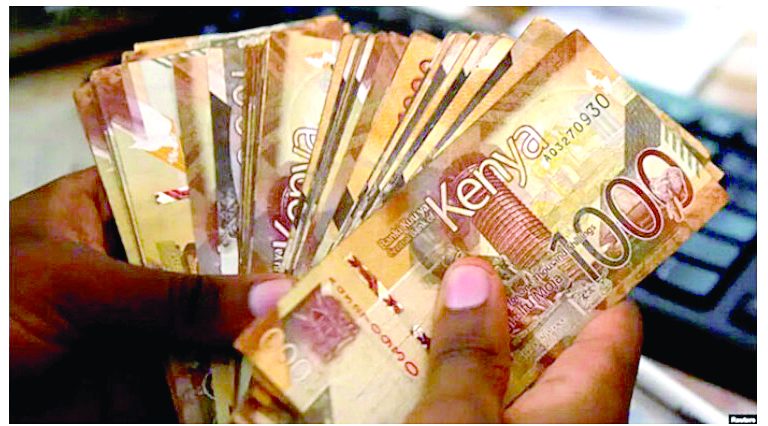Kenyan exports up by 11pc on high tea demand

Kenya’s export levels increased by 11 per cent across 12 months to February 2023, giving marginal hopes to the country’s declining forex reserves that have been hit hard by a weakening shilling.
The increase in exports was mainly supported by a hike in receipts from tea and manufactured items from the international market, which rose by 13.4 per cent and 27.2 per cent.
According to the data from the Central Bank of Kenya (CBK), tea exports hit $1.37 billion (Sh178.1 billion) in February from $1.21 billion (Sh157.3 billion) in a similar period in 2022, reflecting improved prices at the Mombasa tea auction attributed to demand from the traditional markets. Export of manufactured goods rose to $662 million (Sh86.06 billion) while coffee receipt up-ticked marginally to $306 million (Sh39.78 billion) in the period under review.
The agricultural sector, however, suffered a blow in the export of horticulture which declined to $926 million (Sh120.4 billion) in 2023 from the previous $1.08 billion (Sh140.4 billion) despite the festivity season that stretched between December 2022 and February 2023.
High demand for flowers
The period is always characterised by high demand for flowers and other horticulture products that should ideally reflect higher foreign exchange earnings for countries like Kenya.
Increase in exports was mainly supported by a hike in receipts from tea and manufactured items. Kenyan exports up by 11pc on high tea demand Agricultural sector suffered a blow after horticulture exports declined to $926 million this year from the previous $1.08 billion
“Horticulture is finding their way. There was that conversation about specific products and what was holding them back. Things about specific market with regard to vegetable, fruits, avocado, but this seem to be bouncing back quite well,” CBK governor Patrick Njoroge noted during the post-Monetary Policy Committee (MPC) briefing.
The increase in tea receipts comes despite earlier concerns that Kenya could lose big due to dollar scarcity in Egypt and Pakistan, the two major markets that account for more than half of Kenya’s total tea exports.
The dollar shortage concerns saw some shipping lines threaten pulling out of Pakistan over non-payment of imports and freight charges, something that signalled a hard-hitting impact on Kenya’s farmers and the country at large due to market inaccessibility.
The CBK governor, however, noted that the situation has been resolved following an engagement between Kenya and Pakistan on the provision of Letters of Credit (LCs) to facilitate a smooth purchase of Kenyan tea.
“There was some concerns about Pakistan being unable to make payments on their imports but that problem has now been resolved. We have been in touch with our counterparts there and all those matters have firmly been resolved. So no concerns so much,” Njoroge assured.
Remittances
Services exports also had increased receipt, reflecting sustained improvement in international travel and transport. Remittances totalled $4.03 billion (Sh523.9 billion) in the 12 months to February 2023 and were 4.9 per cent higher compared to a similar period in 2022.
On the flip side, Kenya’s imports still grew by 2.1 per cent, with lower imports notable in the infrastructure-related equipment linked to completed projects.
The growth in imports, largely on fuel and other raw materials, continues to widen Kenya’s current account deficit while also draining a significant chunk of the forex reserves. Oil imports hit $5.65 billion (Sh734.5 billion) during the period, a surge from the previous $3.71 billion (Sh482.3 billion) mainly driven by a spike in global crude oil prices.
Kenya’s current account deficit, the difference between a country’s forex inflows and outflows, is projected at 5.4 per cent of Gross Domestic Product (GDP) in 2023 from the estimate of 4.9 per cent in 2022. A current account deficit arises when the forex outflows are higher.












